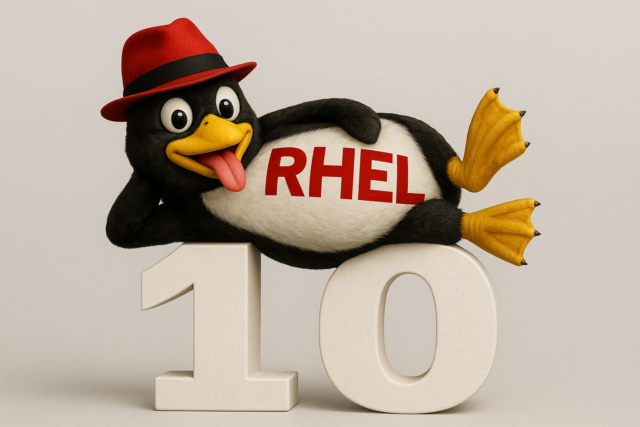Red Hat Enterprise Linux 10 arrives with AI assistant and post-quantum security

Red Hat has just taken the wraps off Red Hat Enterprise Linux 10, and honestly, there’s a lot for the Linux community to get excited about. You see, this new version brings some real substance, pushing enterprise Linux in directions that truly matter for today’s IT world.
First and foremost, there's Lightspeed -- the new AI-powered assistant baked right into RHEL 10. Instead of spending all day searching for answers or poking through documentation, admins can simply ask questions directly from the command line and get real-time help. This is the kind of smart, hands-on support that can actually make life easier, especially for those just getting started or managing sprawling environments.
Security is front and center in this release, too. Red Hat is taking a proactive stance with early support for post-quantum cryptography. OpenSSL, GnuTLS, NSS, and OpenSSH now offer quantum-resistant options, setting the stage for better protection as threats evolve. There’s a new sudo system role to help with privilege management, and OpenSSH has been bumped to version 9.9. Plus, with new Sequoia tools for OpenPGP, the door is open for even more robust encryption strategies.
But it’s not just about security and AI. Containers are now at the heart of RHEL 10 thanks to the new “image mode.” With this feature, building and maintaining both the OS and your applications gets a lot more streamlined. The old image builder is out, and cockpit-image-builder is in, while disk images for cloud and virtualization are now more straightforward. There are no separate /boot partition to worry about here.
The installer also sees some pretty notable changes. Any user created during setup is given admin rights by default, unless you choose otherwise. RDP is now the go-to for graphical remote access, replacing VNC. And setting the time zone is simpler, with a revamped interface.
The kernel gets some love, too. Dynamic support for EFIVARS pstore backends is now a thing, and IBM Z systems gain limited virtio-gpu support. The rteval tool is now containerized, making performance testing and deployment much easier.
Developers are getting a serious upgrade. RHEL 10 arrives with the latest versions of Python, Ruby, Node.js, Perl, and PHP. GCC, Rust, LLVM, GDB, SystemTap, and Grafana all get updated, and the usual suspects (Apache, nginx, MariaDB, MySQL, PostgreSQL, and Valkey) are part of the mix. Proxy and caching needs are met by fresh releases of Squid and Varnish.
System roles in RHEL 10 have also evolved. You can now track unauthorized file changes, manage Podman quadlets, and export or reimport corosync cluster configs. There’s even more flexibility for monitoring with support for Valkey, too.
The web console now features a proper file browser, making file management from the GUI a breeze for those who prefer a visual approach. A heads up, though: DNS features in Identity Management are not fully functional yet. The needed package updates are still on the way, so embedded DNS options will be missing until that lands.
Red Hat Enterprise Linux 10 is up for grabs now on the Red Hat Customer Portal. If you’re a developer, you can dive in for free using the Red Hat Developer Program, which includes everything you need to test, learn, and explore.
